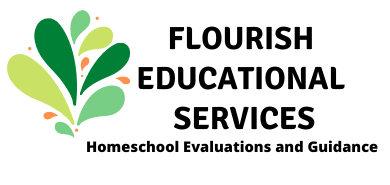Navigating the Educational Maze: Choosing the Best Curriculum for Your Homeschool Student
By Flourish Educational Services
Embarking on the journey of homeschooling offers a world of educational opportunities and possibilities for both parents and children alike. Of all the decisions homeschooling parents face, none is as crucial as choosing the right curriculum for their child. With an abundance of options available, ranging from traditional textbooks to innovative online platforms, the task can seem daunting. With the right approach, you can confidently navigate this educational maze and find the perfect fit for your homeschool student.
In this guide, we’ll explore key factors for choosing a curriculum tailored to your child’s needs. Understanding your child’s preferences and assessing resources, flexibility, and support are crucial for crafting a personalized educational experience. Whether experienced or new, this guide empowers parents to guide their child towards academic success and lifelong learning. Let’s explore how to navigate the educational maze and select the best curriculum for your homeschooler.
- Understanding Your Child’s Learning Style: Each child possesses a unique learning style, whether it’s visual, auditory, kinesthetic, or a blend of these. Take time to observe how your child learns best. Do they excel with hands-on activities or do they prefer reading and writing? Understanding their learning preferences will help you choose a curriculum that meets their individual needs.
- Setting Clear Educational Goals: Before exploring curriculum options, establish clear educational goals for your child. Consider their strengths, weaknesses, interests, and future aspirations. Are you aiming for a well-rounded education, emphasizing specific subjects, or following a specialized approach like Montessori or classical education? Clearly defined goals will help narrow down your choices and ensure alignment with your homeschooling objectives.
- Researching Curriculum Options: Explore the plethora of curriculum options available in the market. From traditional publishers like Pearson and McGraw-Hill to homeschool-specific providers such as Sonlight and Oak Meadow, there’s no shortage of choices. Utilize online forums, homeschooling communities, and reviews to gather insights from other homeschooling parents. Attend homeschooling conventions or curriculum fairs to preview materials firsthand and speak with representatives.
- Considering Flexibility and Adaptability: Flexibility is a key advantage of homeschooling, so opt for a curriculum that allows for adaptation to your child’s pace and interests. Look for materials that offer customization and accommodate various learning styles. Consider whether the curriculum provides options for accelerated learning, remediation, or exploration of additional topics beyond the core subjects.
- Assessing Resource Availability and Support: Evaluate the resources and support provided by the curriculum provider. Does the curriculum include teacher guides, answer keys, and supplementary materials? Is there technical support available for online platforms or software? Consider the level of support you may need as a homeschooling parent, particularly if you’re new to homeschooling or teaching a challenging subject.
- Balancing Structure and Autonomy: Find a balance between structured lesson plans and the freedom to tailor the curriculum to your child’s needs. While some families prefer a complete packaged curriculum with daily schedules and assignments, others opt for a more eclectic approach, combining resources from various sources. Determine the level of structure that suits your family dynamics and teaching style best.
- Evaluating Cost and Value: Homeschooling can be a significant financial investment, so weigh the cost and value proposition of the curriculum. Compare prices across different providers and assess whether the curriculum offers good value in terms of content quality, support, and longevity. Remember, expensive doesn’t always mean better, and there are plenty of budget-friendly options available.
- Seeking Feedback and Adjusting as Needed: Once you’ve selected a curriculum, periodically evaluate its effectiveness and gather feedback from your child. Be open to making adjustments based on their progress, interests, and feedback. Homeschooling is a dynamic journey, and the curriculum should evolve alongside your child’s changing needs and educational goals.
Selecting the ideal curriculum for your homeschooler requires careful attention to their learning style, educational objectives, flexibility, support, and value. Employing a strategic mindset and making use of available resources allows you to confidently maneuver through the extensive array of curriculum choices, ensuring a tailored and fulfilling educational journey for your child. Keep in mind, the ultimate aim extends beyond mere academic achievement; it’s about nurturing a lifelong passion for learning.

